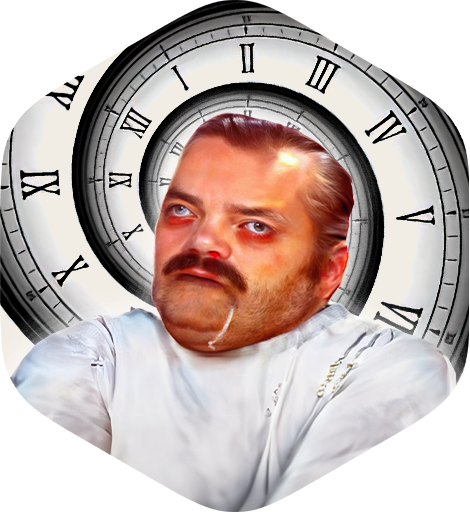Ce sujet a été résolu
However this back 3 / 5 was a problem when Madrid needed to use the diamond formation. Back then vs Al Hilal, Tchouaméni and Valverde formed the double pivot. Even tough they are not bad passers by any mean, Madrid needed more thrust from these deep pivot positions because the likes of Trent and Bellingham in those half spaces didn't see enough fo the ball in thes zones. So later on in that match, Trent and Valverde began to rotate more to allow Trent to dictate more the passing. But as Alonso moved from the 4 3 3, both the back 5 and the diamond are narrow shapes with complete dependence on the fullbacks to provide all of the width. This meant that there was no more inversion of Trent into either the midfield, either as a third center back. Most of his career, Guler played either as an attacking midfielder, aither as a winger, or as a central midfielder. But with Trent no longer inverting, ball progression from a double pivot of Tchouaméni and Valverde would be even worse. Guler now instead of playing as a 10 being at the end of progressive passes, started to become Madrid's main deep playmaker due to both his passing ability and his ability to play on the turn. Instead of passing to the forwards as he used to do as a 10, he would now use his passing to break the lines. To put it simply, he is taking the Toni Kroos role. We even saw Arda Guler as the third center back during Madrid's build up on the left handside of the pitch. However when Madrid switched to a diamond or a back 5, Trent had no longer a winger ahead of him. They executed their signature switch of play. It would be him receiving the ball in wide areas rather than a natural winger like Rodrygo.
The problem is that Trent is not used at his best in this situation, unless he is crossing immediatly. Often, in some scenarios, Trent was isolated in his natural right back position and had no option ahead of him unlike Garcia who had Vinicius drifting into his natural wide position, Garcia preferred to stay centrally, meaning Trent had no support. In a diamond, Bellingham would often go to right half space when he recognized these occasions, ahead of Trent. Valverde also from the diamond but more often from the right of the midfield 3 when they operated in a back 5 would make similar runs with defenders either be dropped to deal with the run, thus giving Trent more space and time on the ball, or if they still insisted on pressing Trent, now he had a man in the half space that he could look to find with the pass. This could drag defenders across, making the opponent's defensive structure more vulnerable. As for Bellingham he was often the midfielder with the most freedom and as a result the most responsability in the final third. This involves linking up the play between the midfield and the forwards but also crashing into the box, especially when Vinicius or Mbappé go drifting. But this makes moving the ball into Bellingham into these dangerous positions even harder because of the teams stacking the center. This is where Guler's ability to break the lines from deep become crucial. While Real Madrid's possession play is promising even with if it's far from perfect, Real Madrid's defensive structure in the other hand, seem to be a failure still.
Because perfect possession is pointless if you can't win the ball back to use it. Their pressing structure is fundamentally broken. For every goal kick, Alonso wants his team pressing very high up the pitch to win the ball back in dangerous areas. Regardless of the formation, the pressing shape has looked almost identical, a front 2 immediatly applying pressure on the center backs, wtih a midfielder picking up the opposition pivot and 2 players positionned narrow to cover the central zones but also ready to press the wide regions. In their 4 3 3 formation against Al Hilal, this meant that Bellingham pushed up to support the forwards and Valverde had to advance from deep and both wingers tucked inside. This shape could force the play wide early and from there the wingers would be perfectly positionned to press the fullbacks, creating a suffocating trap across the entire width of the pitch. It was only a deadly combination when it worked because this shape introduced a glaring weakness To create that agressive frontline press, Madrid had to sacrifice midfield numbers with a midfielder joining the forward and another pushing up to mark the pivot. They looked dangerously light in the central zones. A couple of passes would quickly find an Al Hilal player in the space between Madrid's agressive front line and their depleted midfield. Suddently Madrid committed 5 players to winning the ball and gained nothing. And now these men were out of position. There was a huge gap between the pressing unit and the defense. So Alonso adapted and now in the diamond and the back 5, having a natural front 2 in both cases would mean there was no longer need for a midfielder to join the front line press, allowing them to hypothetically maintain more numbers in the midfield.
But now a new problem emerged: who was picking up the fullbacks? Alonso's solution wfrom the diamond was to commit the wider midfielders into these tucked positinos where they could help cover the center in case the opponent switched to a double pivot, but could also immediatly press in the wider zones. So the pressing personnel were different to the 4 3 3 but the end shape was eerily similar. This meant that the same weakness was still present. And now because of the wide presses were starting much narrower initially than the wingers, when the opposition fullback got the ball, they had more time to get their head up. Against PSG it's same play but the same principles apply : the front 2 on the back 2 and a narrow higher Real Madrid's midfield 3. But now when the fullback receives, the midfield has to come across and you could see similar issues emerging with plenty of room present between the lines. And Salzburg in thier narrow 4 2 2 2 found a similar situation where with a single pass they could get goal side of 3 of the 4 Real Madrid's midfielders, an absolute disaster. When Dortmund were building up from deeper zones, they had a similar shape to what they had on paper and Real Madrid didn't actually have their press structure at all. The matchup instead just naturally played into their hands. When a midfielder went to support the forwards by being the man to press in the wider regions, the starting 4 v 3 advantage meant that even with the midfielder now pushing higher up, they still had a man to man situation in the midfield. Meaning that now the Dortmund's defender was not only looking to make a pass under pressure. It was into a midfielder who was already closely attended. The result was predictable and Real Madrid's press looked imperious.
The 2 biggest issues in Real Madrid press. The thing that both 5 3 2 and 4 4 2 diamond have in common for Madrid is that their high shape is extremely narrow, meaning that from both of these formations, they experience the same issues. it's either a midfielder pushing out too late to make a difference and leaving them exposed in the midfield. But sometimes the issue is not the initial shape of press but rather complete lack of coordination. Sometimes you see 1 or 2 Madrid forwards pressing agressively but only to find themselves isolated. The midfield doesn't follow and the rest of the front line dosn't commit. The press becomes a half hearted, disjointed mess. When only parts of the team press, you get the worst of both worlds. The forwards who press are now removed from the game, stranded high up the pitch as their opponents play around them, meaning. Meanwhie, Madrid are left underloaded in the midfield, creating massive gaps between the lines. And opponents learned to exploit this ruthlessly. They bait the partial press, wait for Madrid's forwards to commit then play simple passes into the space behind them. Suddently they have players running at Real Madrid's defense with time and space to create danger. The team didn't press or sit back as an unit during this club world cup. The entire pressing scheme suffered a complete systematic breakdown that went far beyond individual effort. And it happened consistently across different formations and personnel combinations. When you combine coordination issues with personnel mismatches you get the perfect storm of defensive vulnerability. Guler did his best impression from deep as Real Madrid's deep line playmaker. The difference was that Kross had peak Casemiro alongside him, a midfielder who could cover enormous amounts of ground.
il y a 3 mois
Anthony_A3
3 mois
However this back 3 / 5 was a problem when Madrid needed to use the diamond formation. Back then vs Al Hilal, Tchouaméni and Valverde formed the double pivot. Even tough they are not bad passers by any mean, Madrid needed more thrust from these deep pivot positions because the likes of Trent and Bellingham in those half spaces didn't see enough fo the ball in thes zones. So later on in that match, Trent and Valverde began to rotate more to allow Trent to dictate more the passing. But as Alonso moved from the 4 3 3, both the back 5 and the diamond are narrow shapes with complete dependence on the fullbacks to provide all of the width. This meant that there was no more inversion of Trent into either the midfield, either as a third center back. Most of his career, Guler played either as an attacking midfielder, aither as a winger, or as a central midfielder. But with Trent no longer inverting, ball progression from a double pivot of Tchouaméni and Valverde would be even worse. Guler now instead of playing as a 10 being at the end of progressive passes, started to become Madrid's main deep playmaker due to both his passing ability and his ability to play on the turn. Instead of passing to the forwards as he used to do as a 10, he would now use his passing to break the lines. To put it simply, he is taking the Toni Kroos role. We even saw Arda Guler as the third center back during Madrid's build up on the left handside of the pitch. However when Madrid switched to a diamond or a back 5, Trent had no longer a winger ahead of him. They executed their signature switch of play. It would be him receiving the ball in wide areas rather than a natural winger like Rodrygo.
The problem is that Trent is not used at his best in this situation, unless he is crossing immediatly. Often, in some scenarios, Trent was isolated in his natural right back position and had no option ahead of him unlike Garcia who had Vinicius drifting into his natural wide position, Garcia preferred to stay centrally, meaning Trent had no support. In a diamond, Bellingham would often go to right half space when he recognized these occasions, ahead of Trent. Valverde also from the diamond but more often from the right of the midfield 3 when they operated in a back 5 would make similar runs with defenders either be dropped to deal with the run, thus giving Trent more space and time on the ball, or if they still insisted on pressing Trent, now he had a man in the half space that he could look to find with the pass. This could drag defenders across, making the opponent's defensive structure more vulnerable. As for Bellingham he was often the midfielder with the most freedom and as a result the most responsability in the final third. This involves linking up the play between the midfield and the forwards but also crashing into the box, especially when Vinicius or Mbappé go drifting. But this makes moving the ball into Bellingham into these dangerous positions even harder because of the teams stacking the center. This is where Guler's ability to break the lines from deep become crucial. While Real Madrid's possession play is promising even with if it's far from perfect, Real Madrid's defensive structure in the other hand, seem to be a failure still.
Because perfect possession is pointless if you can't win the ball back to use it. Their pressing structure is fundamentally broken. For every goal kick, Alonso wants his team pressing very high up the pitch to win the ball back in dangerous areas. Regardless of the formation, the pressing shape has looked almost identical, a front 2 immediatly applying pressure on the center backs, wtih a midfielder picking up the opposition pivot and 2 players positionned narrow to cover the central zones but also ready to press the wide regions. In their 4 3 3 formation against Al Hilal, this meant that Bellingham pushed up to support the forwards and Valverde had to advance from deep and both wingers tucked inside. This shape could force the play wide early and from there the wingers would be perfectly positionned to press the fullbacks, creating a suffocating trap across the entire width of the pitch. It was only a deadly combination when it worked because this shape introduced a glaring weakness To create that agressive frontline press, Madrid had to sacrifice midfield numbers with a midfielder joining the forward and another pushing up to mark the pivot. They looked dangerously light in the central zones. A couple of passes would quickly find an Al Hilal player in the space between Madrid's agressive front line and their depleted midfield. Suddently Madrid committed 5 players to winning the ball and gained nothing. And now these men were out of position. There was a huge gap between the pressing unit and the defense. So Alonso adapted and now in the diamond and the back 5, having a natural front 2 in both cases would mean there was no longer need for a midfielder to join the front line press, allowing them to hypothetically maintain more numbers in the midfield.
But now a new problem emerged: who was picking up the fullbacks? Alonso's solution wfrom the diamond was to commit the wider midfielders into these tucked positinos where they could help cover the center in case the opponent switched to a double pivot, but could also immediatly press in the wider zones. So the pressing personnel were different to the 4 3 3 but the end shape was eerily similar. This meant that the same weakness was still present. And now because of the wide presses were starting much narrower initially than the wingers, when the opposition fullback got the ball, they had more time to get their head up. Against PSG it's same play but the same principles apply : the front 2 on the back 2 and a narrow higher Real Madrid's midfield 3. But now when the fullback receives, the midfield has to come across and you could see similar issues emerging with plenty of room present between the lines. And Salzburg in thier narrow 4 2 2 2 found a similar situation where with a single pass they could get goal side of 3 of the 4 Real Madrid's midfielders, an absolute disaster. When Dortmund were building up from deeper zones, they had a similar shape to what they had on paper and Real Madrid didn't actually have their press structure at all. The matchup instead just naturally played into their hands. When a midfielder went to support the forwards by being the man to press in the wider regions, the starting 4 v 3 advantage meant that even with the midfielder now pushing higher up, they still had a man to man situation in the midfield. Meaning that now the Dortmund's defender was not only looking to make a pass under pressure. It was into a midfielder who was already closely attended. The result was predictable and Real Madrid's press looked imperious.
The 2 biggest issues in Real Madrid press. The thing that both 5 3 2 and 4 4 2 diamond have in common for Madrid is that their high shape is extremely narrow, meaning that from both of these formations, they experience the same issues. it's either a midfielder pushing out too late to make a difference and leaving them exposed in the midfield. But sometimes the issue is not the initial shape of press but rather complete lack of coordination. Sometimes you see 1 or 2 Madrid forwards pressing agressively but only to find themselves isolated. The midfield doesn't follow and the rest of the front line dosn't commit. The press becomes a half hearted, disjointed mess. When only parts of the team press, you get the worst of both worlds. The forwards who press are now removed from the game, stranded high up the pitch as their opponents play around them, meaning. Meanwhie, Madrid are left underloaded in the midfield, creating massive gaps between the lines. And opponents learned to exploit this ruthlessly. They bait the partial press, wait for Madrid's forwards to commit then play simple passes into the space behind them. Suddently they have players running at Real Madrid's defense with time and space to create danger. The team didn't press or sit back as an unit during this club world cup. The entire pressing scheme suffered a complete systematic breakdown that went far beyond individual effort. And it happened consistently across different formations and personnel combinations. When you combine coordination issues with personnel mismatches you get the perfect storm of defensive vulnerability. Guler did his best impression from deep as Real Madrid's deep line playmaker. The difference was that Kross had peak Casemiro alongside him, a midfielder who could cover enormous amounts of ground.
Souverainiste et royaliste.
il y a 3 mois
New-Volo
3 mois
Modo epingle

Topic officiel de la finale de la coupe du monde des clubs de la FIFA.
Match en direct sur TF1 ou l'application Dazn en clair.
Topic officiel de la finale de la coupe du monde des clubs de la FIFA.
Match en direct sur TF1 ou l'application Dazn en clair.
Khayr ad-Din Barbaros débuta véritablement la colonisation turque ottomane du Maghreb.
il y a 3 mois
Anthony_A3
3 mois
500 posts.

Ca ne m'arrive pas tout les jours

Souverainiste et royaliste.
il y a 3 mois
Captain404
3 mois
Zut... Où ai-je bien pu mettre le bouton désépingler ?

il y a 3 mois
Aya les modos ont aucune pitié pour les parisix

https://www.twitch.tv/nothrod Go poubelle tous les mercredis soir
il y a 3 mois







































